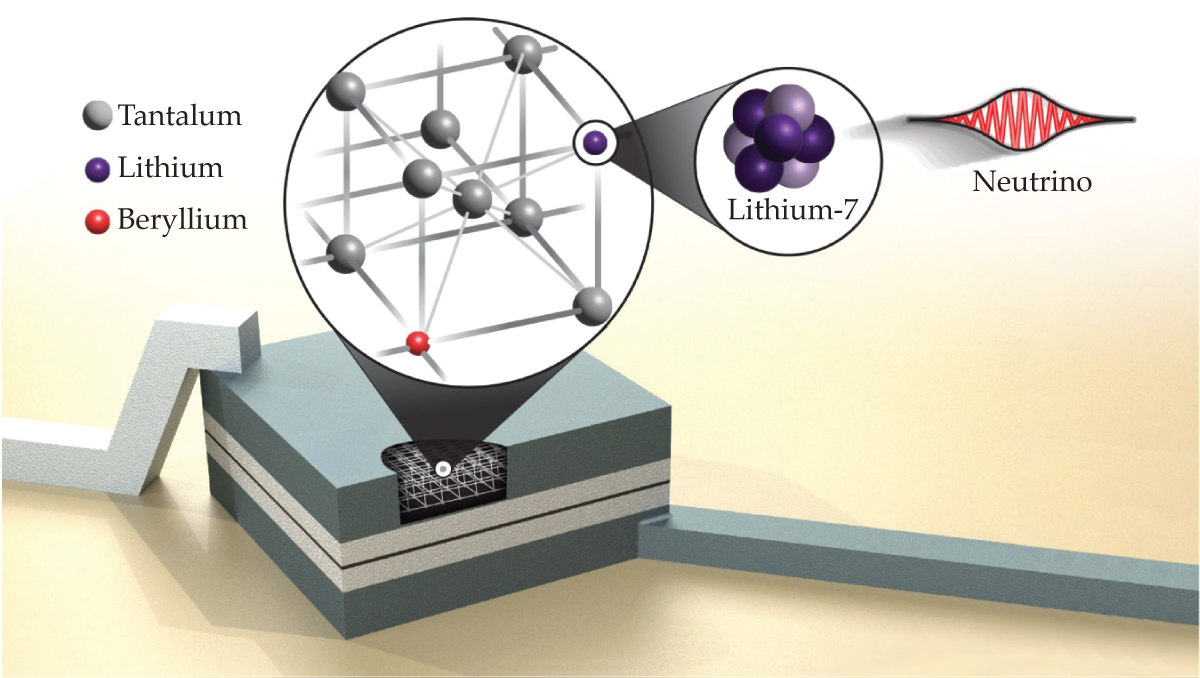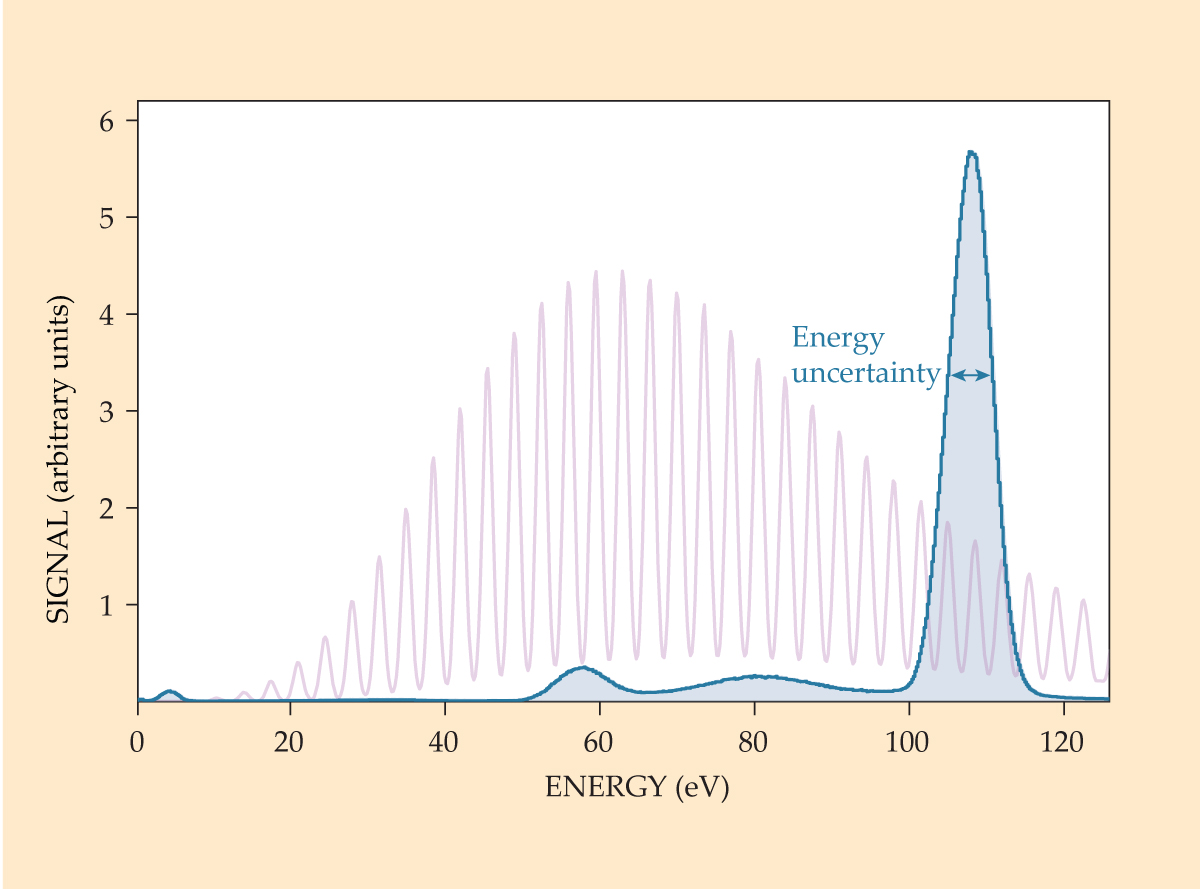Precision tabletop neutrino science starts with rare isotopes
DOI: 10.1063/pt.ufca.bjwv
Figure 1.

Beryllium-7 decays into lithium-7 via electron capture, a process whose only byproduct is an electron neutrino. By embedding 7Be atoms in the tantalum film of a superconducting-tunnel-junction sensor, researchers can precisely measure the recoil energy imparted to the 7Li by the decay. (Image adapted from J. Smolsky et al., Nature 638, 640, 2025

Pitching neutrinos can be easier than catching them. Because the lightweight particles stream mostly unencumbered through any matter they encounter, neutrino detectors must monitor gargantuan volumes of water or other material, ever vigilant for the signs of a rare neutrino interaction, wherever it may occur. On the other hand, the processes that create neutrinos, including certain nuclear decays and particle reactions, can be readily localized and precisely studied even in a tabletop experiment.
That’s the idea behind the BeEST
The experiment wouldn’t have been possible more than a handful of years ago, because 7Be occurs in only trace amounts in nature, and there was no way of making it in bulk with the required purity. The situation changed with the advent of rare isotope factories, including the Advanced Rare Isotope Laboratory (ARIEL) at the TRIUMF accelerator center in Canada and the Facility for Rare Isotope Beams (FRIB) at Michigan State University in the US (see Physics Today, June 2023, page 21
Figure
Figure 2.

In the recoil energy spectrum of lithium-7, shown in blue, the largest peak has an energy uncertainty of 2.9 eV. From conservation of momentum and the Heisenberg uncertainty principle, it follows that the neutrino produced in the nuclear decay has a position uncertainty of at least 6.2 pm. The frequency comb in faint purple is the spectrum of the calibration laser that researchers used to convert the currents they measured into energy. (Figure adapted from J. Smolsky et al., Nature 638, 640, 2025

Why does it matter how big a neutrino’s wavepacket is? Although the implications aren’t fully clear, the researchers note that 6.2 pm is several thousand times the size of the 7Be nucleus. Theorists have debated how quantum mechanics treats nuclear decays: Are the interactions localized on the scale of the nucleus or the whole atom? An electron-capture decay, which necessarily involves an electron from outside the nucleus, is perhaps not the best platform for answering that question. Repeating the experiment with a beta decay, whose starting state is an isolated nucleus, is on Leach and colleagues’ to-do list. (J. Smolsky et al., Nature 638, 640, 2025
This article was originally published online on 20 March 2025.
More about the Authors
Johanna L. Miller. jmiller@aip.org
